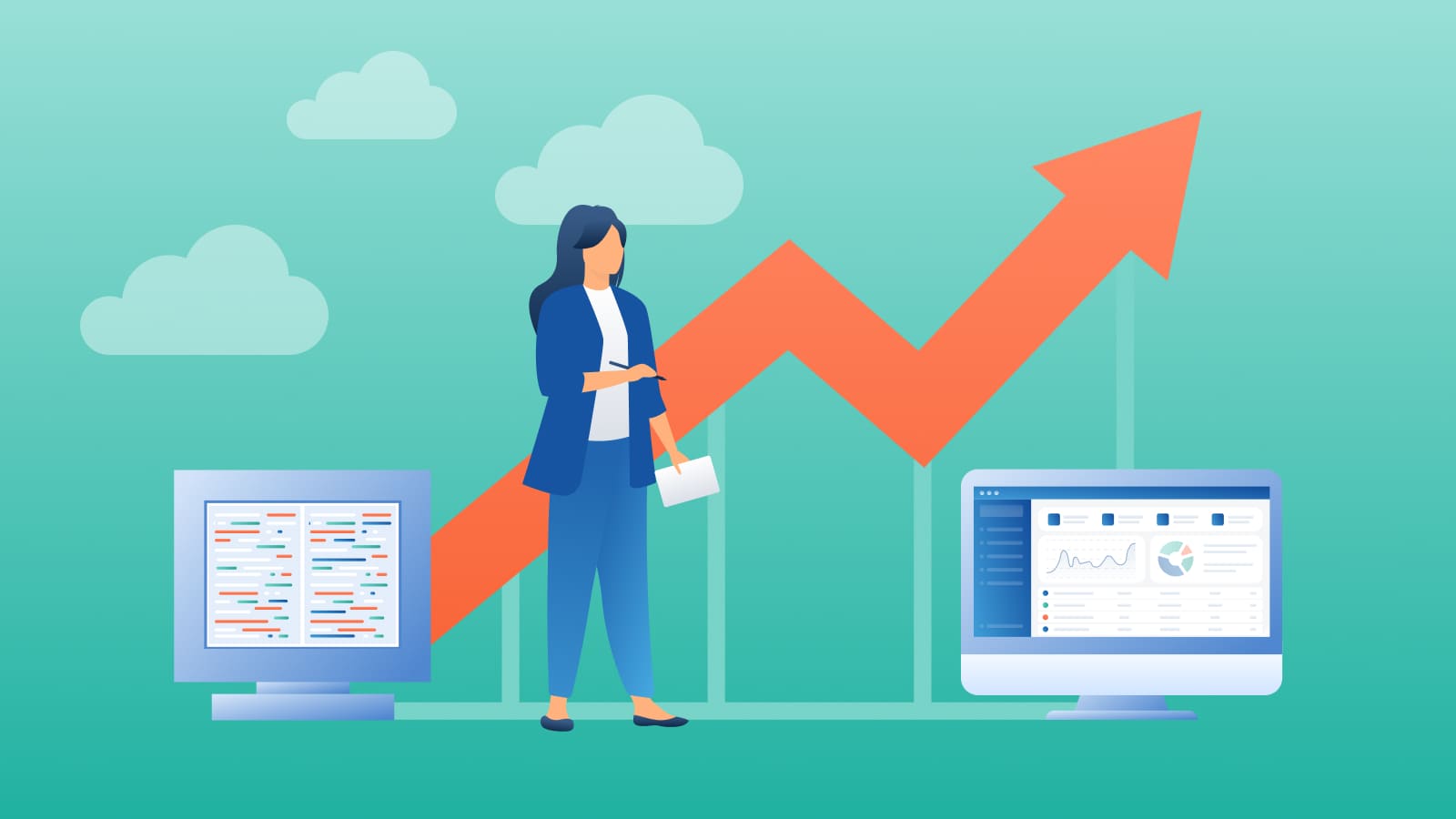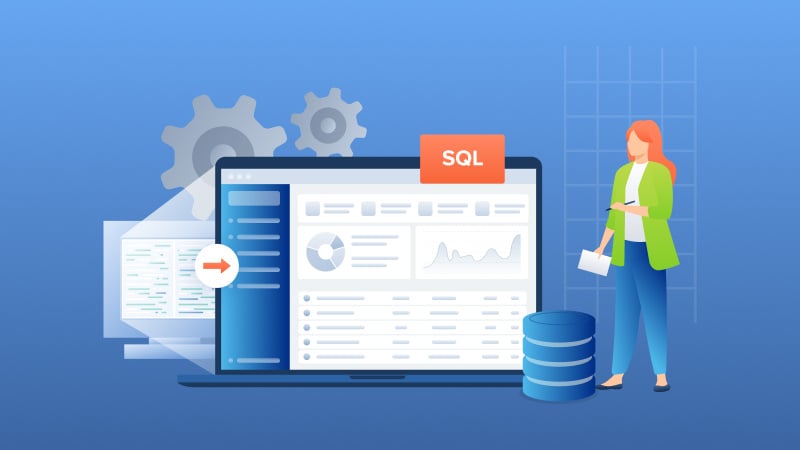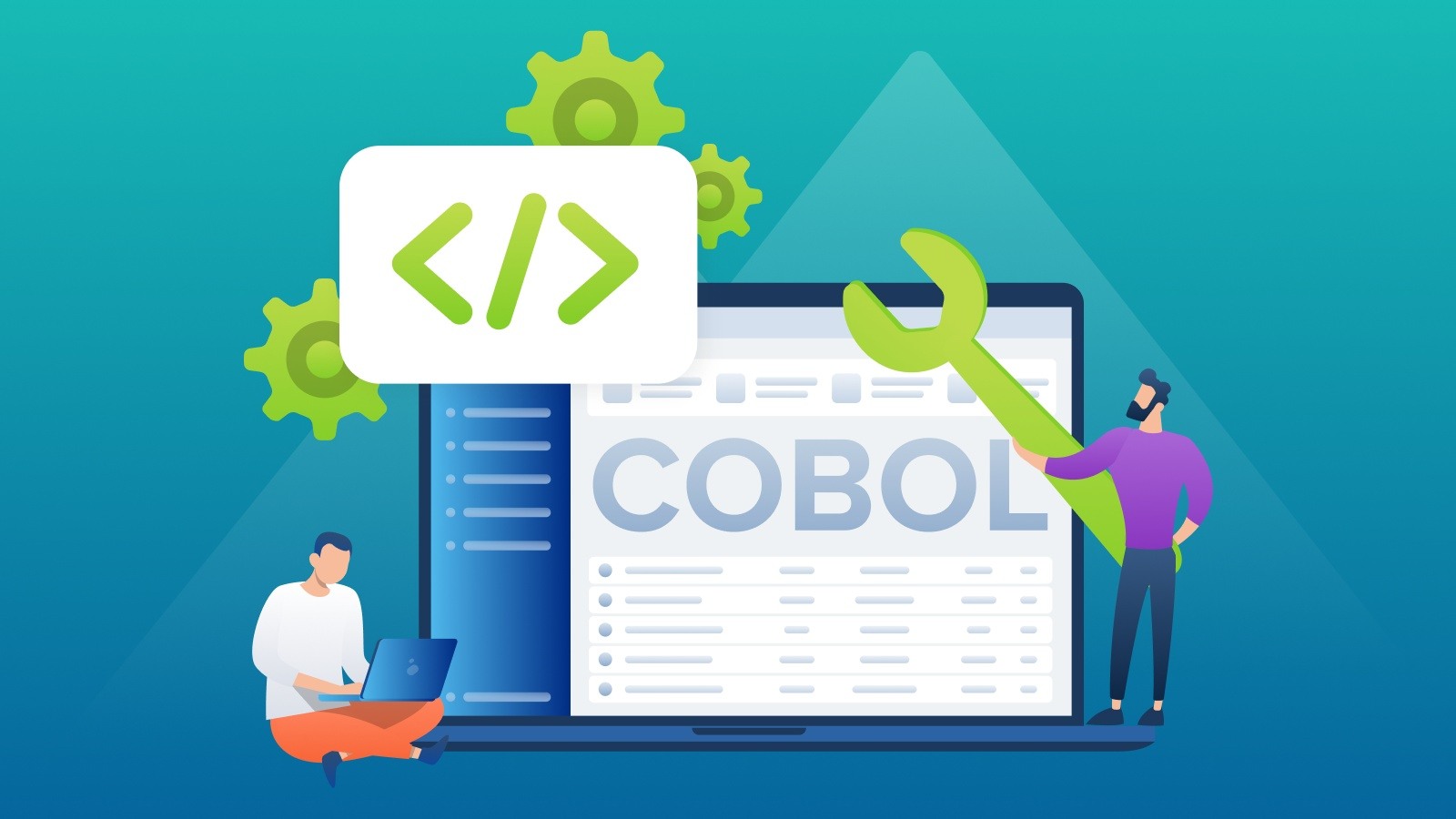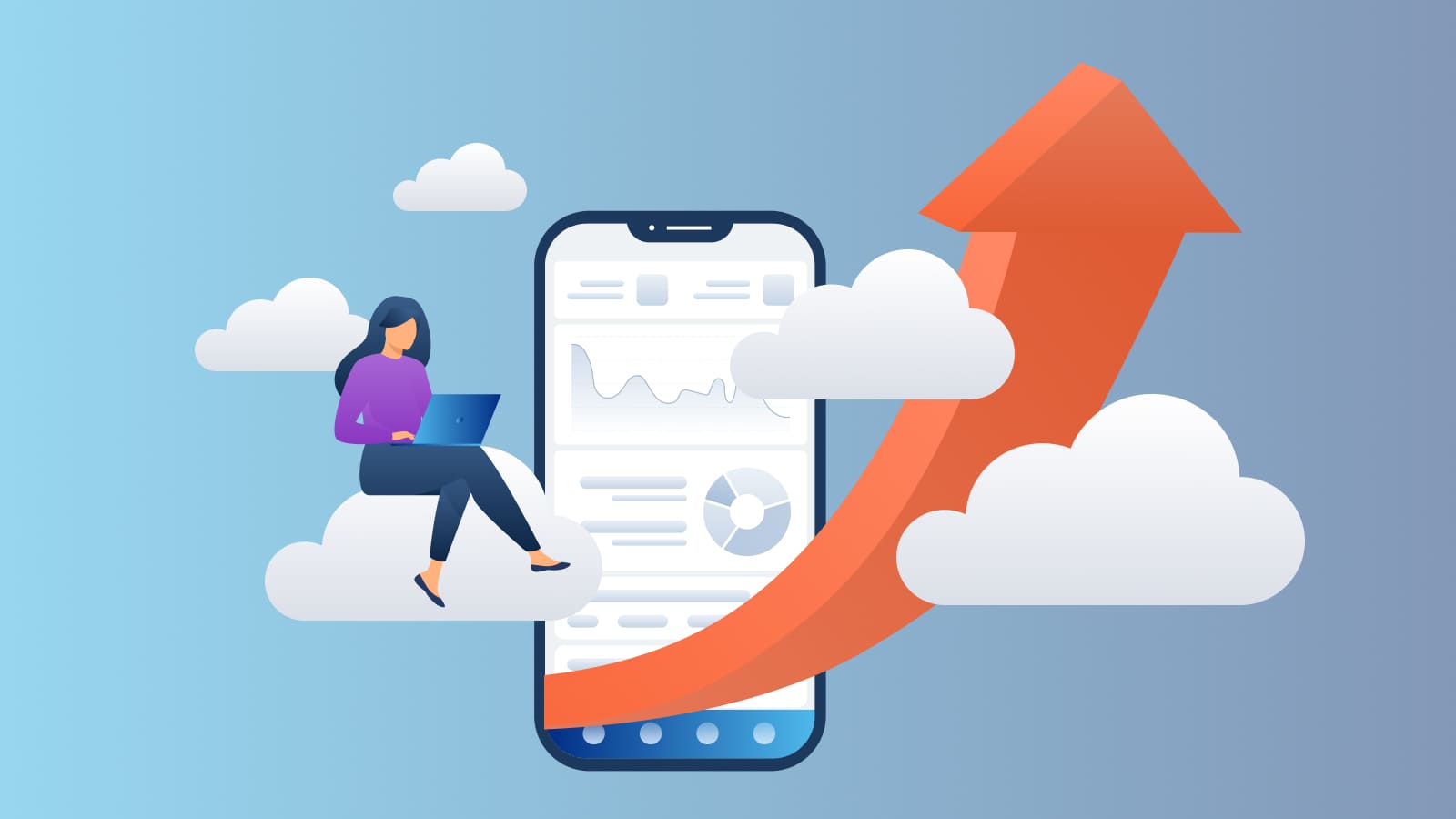Why Migrate from Btrieve to PostgreSQL and other Relational Databases?
Introduction Many independent software vendors (ISV) and corporate users still rely on applications that use a category of database collective called...
12 min read
 Mertech
:
Jul 6, 2024 8:30:00 AM
Mertech
:
Jul 6, 2024 8:30:00 AM

Let's face it: Legacy systems that once served your business well can eventually become bottlenecks to progress.
So, it's no surprise that about 92% of businesses are either working on or planning an application modernization project.
However, navigating the complexities of legacy application modernization isn't a walk in the park, especially for large corporations and software vendors.
In order to execute such a project successfully, you have to know how to do it right. This is where a well-crafted application modernization strategy comes into play.
It's your roadmap to success, ensuring you avoid common application modernization challenges and smoothly transition to a modernized software landscape.
Join us as we delve into the key steps of application modernization strategies and other useful tips to make your modernization journey a triumph.
Taking up an application modernization project is an ambitious initiative. To start things off on the right foot, you should adopt a strategic approach that clarifies the fundamentals:
When it comes to application modernization, success hinges on a well-crafted strategy. But for your strategy to be successful, it must be built on solid foundations.
Let's unveil the critical components that underpin your app modernization strategy:
Think of your business logic as the heart of your application. You've invested years perfecting it, and throwing it away isn't an option.
So, how can you ensure that it is preserved and incorporated in the modernization process?
The solution lies in retraining your team to rearchitect and rewrite the business logic for the Cloud using modern programming languages and APIs. However, this step can be time-consuming and challenging, often requiring specialized expertise that many organizations lack.
You might have heard the saying that “old databases never die." However, clinging to outdated database languages can limit your application's capabilities.
In contrast, modern databases can run applications in the Cloud, improve scalability, and reduce licensing costs.
Yet, migrating to modern databases is no small task, as it involves rewriting your data access code. This often requires close collaboration between experienced and new developers, which translates into a considerate time and resource investment.
Modern users demand clean, intuitive, and device-agnostic user experiences. Traditional interfaces designed for desktop access just won't cut it.
Achieving a new and improved UX/UI requires starting from scratch with designers who have user-centric design thinking and developers skilled in UX/UI implementation.
This means your success hinges on your ability to find specialized experts, which could create an additional layer of complexity to the process.
Legacy applications operate behind firewalls, with limited concerns about outside threats.
But the Cloud changes the game.
Application-level and infrastructure-level security become paramount.
Do your teams have the expertise to implement various cloud security standards effectively?
If not, you may need to consider bringing in specialized experts, as neglecting security can lead to vulnerabilities.
Deploying applications to the Cloud requires a different skill set.
It involves considerations like scalability, redundancy, and load balancing.
Additionally, applications may experience rapid global growth, demanding infrastructure that can handle it. That's why managing DevOps and using cloud infrastructure tools becomes crucial.
So, you've recognized the need for application modernization.
But how exactly do you modernize your applications?
The journey ahead is exciting, but it can also be complex and challenging.
Let's unveil the crucial application modernization steps you need to take.
Begin with a deep dive into your existing applications. Ask yourself:
When going through this application modernization assessment checklist, consider user feedback and industry benchmarks. Also, look for bottlenecks, vulnerabilities, and outdated tech.
What's the big problem you're solving? Is it sluggish performance, security concerns, or outdated features? Define it clearly.
Outline the project's scope by identifying which features, functionalities or systems require updates.
You can also create a detailed project scope document that serves as a roadmap, ensuring everyone involved understands the objectives.
Legacy application modernization may bring a learning curve for your team. Prepare your workforce for this transition by providing training and support.
Why is this important?
Employees may have a preference for specific technologies and tools, making the sudden adoption of new technologies and workflows potentially disruptive.
You can implement the following strategies to ensure a smooth adoption of new technologies:
Select development platforms, tools, and infrastructure that align with your project goals.
Consider both in-house and external resources and create a detailed application modernization tools and technology roadmap.
The tools should seamlessly integrate with automated modernization solutions, making re-architecture, refactoring, or rewriting a breeze. Embrace technologies like microservices and containerization to enhance the process.
At this stage, you can leverage the data you've gathered to develop a robust business plan. There, you can outline the expected outcomes and benefits of the application modernization project.
You should also calculate the potential ROI and determine the budget required.
However, keep in mind that financing application modernization isn't your typical IT budgeting exercise. Modernization initiatives come with inherent uncertainties that must be factored into budget calculations.
To garner support from decision-makers, you should communicate the value an app modernization can bring to the organization, paving the way for the necessary funding and executive backing.
Now, it's time to decide on the modernization approach that best suits your needs. You have several options to choose from:
No matter your choice, ensure you have the expertise and planning to maintain the security of your applications and cloud-based data.
Set clear success metrics to measure the effectiveness of your modernization strategy.
Define KPIs such as application performance improvements, cost savings, or increased user satisfaction. Implement robust monitoring and tracking systems to measure progress in real time and make data-driven decisions.
Continuous monitoring is essential to prevent your modernized applications from becoming outdated in the future. By benchmarking and measuring results consistently, you can track progress towards your goals and objectives.
While your internal teams may have key roles, such as chief architects and project managers, they may lack the specialized skills required for the transformation.
Collaborating with an experienced modernization partner helps prioritize activities, minimize chaos, and steer the initiative towards desired results.
It's important to choose a modernization partner with the expertise required for your specific project needs. You can do that by conducting thorough research and due diligence to select the best fit.
So, you already have a detailed application modernization checklist? Now what?
Simply having a checklist isn't enough. You need to build a compelling business case that highlights the true benefits of application modernization for your organization.
Toil (the repetitive and manual work involved in maintaining legacy applications) can significantly drain your resources.
For instance, teams grappling with legacy applications may find themselves stuck and unable to upgrade due to dependencies like outdated software versions. This can lead to extensive regression testing costs and a convoluted codebase.
Here's where application modernization comes to the rescue.
Modernization efforts often involve rewriting key applications, achieving robust test coverage, and reducing manual testing expenses.
The result? You can end up making significant cost savings and free up resources for more important tasks.
Corporate strategic alignment can secure your modernization project funding. The closer the alignment, the higher the chances of success.
Why is this the case?
When these projects align with investor-level initiatives focused on revenue generation or expanding market spaces (even if indirect), they have a higher likelihood of receiving support. Such alignment may involve enhancing existing software for reusability and scalability through APIs.
For example, a project improving internal staff applications can reduce toil while indirectly supporting the strategic goal of providing better customer service.
Modern cloud-based solutions not only offer cost savings and scalability but also provide global accessibility.
The result?
You extend your market reach to new customers, and you can also upsell them to your existing software and services. Additionally, monetizing new cloud-based offerings can create additional revenue streams from your loyal customer base.
Cloud adoption also aligns your business with industry standards. Traditional desktop-based software is giving way to cloud-based solutions accessed from web browsers and mobile devices. This makes it perfect for delivering convenient, accessible solutions to meet the evolving needs of businesses worldwide.
A thorough cost/benefit analysis is essential to quantify the value of modernization. It not only highlights cost reductions but also factors in the long-term benefits, such as improved performance and agility.
For example, traditional servers come with significant expenses (e.g., purchasing, security). In contrast, transitioning to cloud-based servers eliminates the need for physical infrastructure, saving substantial sums.
Additionally, embracing cloud-based Infrastructure-as-a-Service (IaaS) models can relieve your business from maintenance hassles, making a compelling case for application modernization.
Many businesses hesitate to embark on modernization projects due to the potential risks and complexities they might stumble upon in the process.
However, the selection of suitable technology can alleviate these concerns and streamline the decision-making process.
Let's explore the technologies you can use to facilitate your application modernization journey.
APIs (Application Programming Interfaces) help you modernize desktop applications that cannot otherwise be moved to the Cloud. These interfaces act as bridges, allowing seamless communication between different applications.
The best part?
Not only do you get to integrate your legacy systems with modern frontends, but you also get to do it with zero investment in new infrastructure.
Here are the three main ways in which you can implement APIs in your legacy systems:
Creating an API-based architecture from the ground up involves a complete application rewrite.
While this approach offers significant customization benefits, it may require hiring developers with expertise in API development.
Additionally, it's crucial to ensure that all customers are prepared to transition to the Cloud, as some may still rely on on-premise solutions.
Rather than discarding existing applications, code conversion to APIs allows for their seamless integration into modern architectures.
By exposing the application's functions as secure web APIs, you can swiftly introduce cloud compatibility while continuing to serve Windows-based customers. This method is cost-effective and user-friendly, as developers of varying skill levels can create web APIs.
APIs also facilitate the transformation of monolithic applications into a network of microservices.
This modular approach streamlines development and operation, allowing each microservice to serve a specific business purpose.
While application modernization microservices approach offers rapid scalability and independent operation, consider potential challenges such as latency during peak usage and granularity suitability for your application. Also, keep in mind that not all monolithic apps can be converted to the microservices model.
DevOps stands at the forefront of application modernization. At its core, DevOps is all about collaboration and faster project progress. Furthermore, DevOps can be combined with cloud-native services to amplify the modernization journey, ensuring optimal results.
Within the DevOps framework, there are a few processes that play pivotal roles in enhancing modernization efforts:
CI/CD streamlines the entire development pipeline.
It automates the integration of code changes into a shared repository, where devs can run automated tests. If tests pass, the code is automatically deployed to the production environment.
This continuous integration and deployment process significantly reduces development cycle times, allowing teams to deliver new features and updates rapidly.
IaC revolutionizes how organizations manage their IT infrastructure.
It involves describing infrastructure configurations in code rather than manually configuring servers and networks.
IaC provides agility by enabling rapid provisioning and scaling of resources, efficiently manages infrastructure changes, and ensures version control for infrastructure configurations. By reducing provisioning and maintenance efforts, IaC frees up valuable time for teams to focus on innovation and application development.
Containers offer a consistent packaging format for applications and their dependencies, encapsulating everything needed to run the application.
They are platform-agnostic, allowing apps to run seamlessly across various environments, whether it's on developers' desktops, in the cloud, or on on-premises servers. This simplifies development, testing, and deployment processes, making it easier to maintain and scale applications efficiently.
Kubernetes, on the other hand, is an open-source container orchestration platform that simplifies the deployment, scaling, and management of containerized apps across diverse environments.
It automates various tasks like load balancing, scaling, and self-healing. The platform is a popular choice for organizations looking to harness the power of containerization while ensuring reliability and scalability.
GitOps represents a paradigm shift in DevOps practices by leveraging Git as the single source of truth for both application code and infrastructure configuration.
It unifies various DevOps processes, including IaC, DevSecOps, and monitoring, into a Git-centric workflow. This approach brings transparency, traceability, and collaboration to the development and operations teams.
With GitOps, changes to infrastructure and application configurations are managed through Git repositories, allowing for version control, auditability, and efficient rollbacks.
Modernizing your applications also involves data management optimization, which allows you to stay competitive in today's fast-paced digital landscape.
Here are three key approaches to consider:
Database migrations (also known as schema migrations) are controlled sets of changes designed to transform the structure of relational databases. They enable a smooth transition from the current database state to the desired one.
Migrations manage incremental, often reversible, changes to data structures programmatically, ensuring repeatability, shareability, and testability without data loss.
A serverless database is a fully managed database-as-a-service (DBaaS) that automatically allocates and scales computer and storage resources based on demand.
It allows developers to focus solely on building applications, outsourcing operational tasks, and scaling to cloud providers. With a pay-as-you-go pricing model, costs are tied to actual resource usage, making it an efficient choice.
Cloud computing and big data technologies are integral to modernizing data strategies.
Cloud platforms offer flexibility and scalability, making them cost-effective for handling large data volumes. Solutions like NoSQL and Hadoop facilitate the processing and analysis of diverse and unstructured data types, such as sensor data and customer interactions, empowering data-driven decision-making.
Now that we've explored the various technology options, it's essential to understand how to select the approach that best suits your organization's needs.
There are several application modernization best practices to consider, each with its own advantages and challenges:
This strategy involves moving an application to the Cloud without making significant changes to its architecture or design.
It's often considered the quickest migration option, as it doesn't require rewriting the code.
Lift & shift is suitable for off-the-shelf applications that can't be modified easily but may not be ideal for resource-intensive applications that could benefit from cloud-native features.
However, keep in mind that while it saves time, it might not fully leverage the advantages of the Cloud and can carry existing limitations to the cloud environment.
Refactoring or re-architecting involves a complete rewrite of the application's architecture and design, making it suitable for migrating critical software that isn't already API-driven. While expensive, this is essential for staying competitive in the future.
The advantage?
Rewriting an application offers the flexibility to redesign it for optimal cloud performance, allowing you to take full advantage of cloud-native features and scalability.
However, it can be time and budget-intensive, especially for extensive overhauls.
An alternative strategy would be to do a hybrid rewrite. This involves identifying which parts of the application are best suited for the Cloud and which should remain on-premise.
When creating a roadmap, it's crucial to avoid common pitfalls that can derail the application modernization business process:
Freight Management Systems: Revolutionizing Logistics with Mertech
Context: Freight Management Systems, a trailblazer in transportation logistics software, sought to modernize its 25-year-old legacy TMS software.
The challenge? Transitioning from a desktop-based system to a cloud-based solution for enhanced global competitiveness and a modernized application.
Process: Partnering with Mertech, FMS aimed to modernize their application without re-writing their extensive back-end code. Following a comprehensive application modernization strategy, Mertech used the Thriftly platform, allowing the reuse of existing back-end code to create APIs, drastically simplifying the modernization process. This approach focused on transforming the front-end, introducing web-based modules while maintaining the functionality of the existing system.
Result: The transformation led by Mertech marked a pivotal shift for FMS. Not only did it significantly improve their product's design and functionality, but it also enabled FMS to offer additional services like EDI. This modernization opened doors to new integrations, increasing customer value and loyalty. It positioned FMS to efficiently cater to the evolving demands of a remote workforce and expand their reach in the logistics industry.
Creating a robust application modernization strategy is a complex process with numerous variables. Mertech offers reliable app modernization services that can take your project from concept to completion, ensuring success in the evolving digital landscape.
An application modernization strategy is your roadmap for upgrading legacy systems, enhancing efficiency, reducing costs, and staying competitive in the digital age.
Without a strategy, all the time and energy you put into modernization efforts could turn out fruitless, failing to bring the desired results.
Yes, having a strategy is important even when adding features. It ensures that new additions align with the overall goal of application modernization while maintaining system integrity.
Updating the strategy during the project is not only possible but also advisable. This way, you can adapt the strategy on the go, enabling you to incorporate new insights and opportunities as they arise.
It's generally best to focus on high-priority features that align with business goals in the initial strategy. Low-priority features can be addressed later to maintain project efficiency and avoid scope creep.
A well-defined strategy that outlines the expected benefits, ROI, and a clear roadmap can help secure funding. Also, you should communicate clearly how modernization can help achieve your overall business objectives.
Choose a partner with experience in modernization projects, a track record of successful outcomes, and a deep understanding of your industry. Request references, review case studies, and assess their approach to ensure alignment with your goals.
Yes, contingency plans and fail-safes are essential. Including disaster recovery and backup strategies ensures data protection and business continuity in case of unexpected issues during modernization.

Introduction Many independent software vendors (ISV) and corporate users still rely on applications that use a category of database collective called...

COBOL applications are the foundation of numerous essential business functions, especially within the banking, insurance, and government sectors....

Imagine breaking free from the constraints of old, monolithic systems and embracing the agility and innovation of cloud-based solutions.